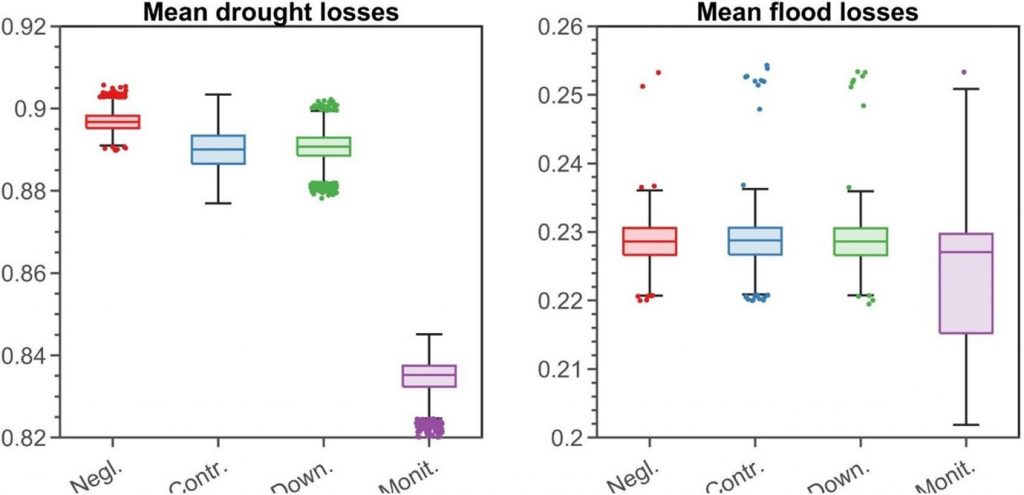Human activities have increasingly affected hydrological processes in many river basins worldwide leading to changes in the severity of droughts and floods. Many numerical models have been developed for risk assessment. Yet, attitudes risk perceptions of individual are not represented in current system dynamics modelling approaches.

In this study we developed a system dynamic model to represent the dynamics between hydrological extremes, adaptation measures, and decision-making in a society characterized by the co-existence of four behaviours: risk-neglecting, risk-controlling, risk-downplaying, and risk-monitoring.
Among different results, we found that societies characterized by high heterogeneity in risk-attitudes tend to implement less collective measures, opting instead for individual measures by specific social groups.

This emphasizes the importance of accounting for different social groups when modelling human-water dynamics for climate risk assessment. (by Maurizio Mazzoleni, Institute for Environmental Studies)
Take home message
- Different risk attitudes have a strong influence on social awareness, preparedness, and consequent drought and flood losses.
- The impacts of a hydrological extreme can be exacerbated by the adaptation actions taken to cope with the opposite extreme.
- Co-existence of social groups with different risk attitudes influences the implementation of collective adaptation actions.


